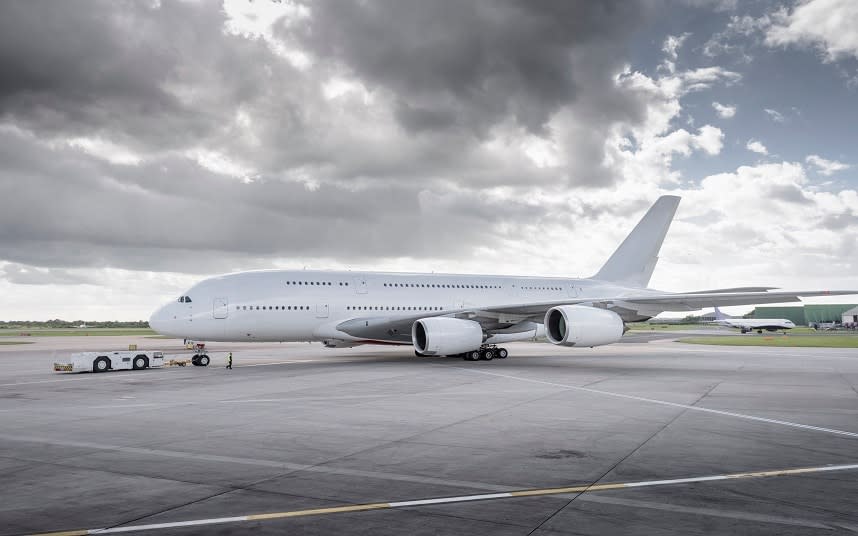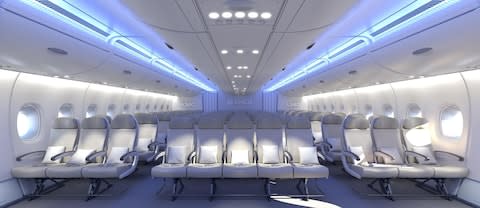A decade after entering service, the first A380s are being stripped and sold for parts

Fresh doubts have been cast on the future of the world’s largest passenger plane after a German leasing company said it plans to break up two A380s that nobody wants.
Singapore Airlines returned two 11-year-old “superjumbos” - among the very first to enter service - to the Dortmund-based Dr Peters Group in November. However, despite efforts to lease them to a new carrier - BA was among those approached - they will now be stripped and sold for parts.
“After extensive as well as intensive negotiations with various airlines, such as British Airways, HiFly and IranAir, Dr Peters Group has decided to sell the aircraft components and will recommend this approach to its investors,” the company said in a statement emailed to Reuters.
The process will see the two jets - currently in storage at Tarbes Lourdes Pyrénées Airport in France, one of Europe’s biggest repositories for unwanted aircraft - combed for valuable items such as electronics and landing gears, a Dr Peters Group official said. Their engines had already been removed and leased back to Rolls-Royce.
The travails of the A380 have become something on an aviation soap opera in recent years. The model was launched to much fanfare in 2005 with commentators declaring it the future of air travel. But airlines were harder to convince and sales slowly ground to a halt. Just two new orders were received in 2015 and none in either 2016 or 2017. Last year it looked like the production line could be shut down as Emirates - the A380’s biggest customer - wavered on a new bulk order. The UAE carrier finally threw the superjumbo a lifeline by committing to purchase 20, with an option for 16 more, in January, in a deal worth up to £11.5 billion.
Where planes go to die: extraordinary aircraft graveyards
Airbus had been hoping Chinese airlines would help revive the superjumbo. China will be the world’s biggest air travel market by 2022, according to the International Air Transport Association. But this week’s news demonstrates the model’s unattractiveness in the second-hand market - something which could dissuade potential buyers.
Why does nobody want the A380?
The jet has been widely praised by passengers for offering a smooth and comfortable flying experience, but the economics of operating it have proved off-putting for airlines. Simply put, every service needs to run at close to full capacity for carriers to make money.
Airlines are instead opting to buy medium-sized planes, such as the Dreamliner, the A320neo, which launched in 2016, and the A350, introduced in 2015.
Independent air transport consultant John Strickland told the Telegraph: “The A380 is a well regarded aircraft by airlines which operate it and by customers flying on it. Generally, however, twin-engine aircraft such as the Airbus A350 and the Boeing 777 reduce the financial risks involved with filling capacity and operating costs.”

Which airline owns the most A380s?
Emirates, by a long way. With a fleet of 100, it's one of the few carriers able to get the maximum value out of the four-engine A380, and has made it the core of its long-haul fleet. Other airlines have ordered them in far smaller quantities: British Airways, for example, has 12 of them in its fleet of 270 aircraft.
The Airbus superjumbos currently in service
What’s the next biggest passenger plane?
Hypothetically, should every single A380, capable of carrying 853 passengers in a single class, be grounded, the Boeing 747-800 would become the largest passenger aircraft in the world, capable of carrying 700 passengers in a single class.
12 hidden aircraft features you probably didn't know about
But isn’t the 747 falling from favour?
Correct. In December United waved goodbye to its final 747 with a farewell flight from San Francisco to Honolulu (recreating the route of its first 747 service in 1970). Not one US carrier now flies the iconic Boeing aircraft, which – after almost 50 years of tireless service – is gradually disappearing from our skies.
Even its biggest customer, British Airways, is phasing it out of its fleet. It currently has 36 jumbo jets, according to the website Airfleets.net, but a further 34 have already been placed in storage and it is said the model will be gone from its hangars by 2024.

